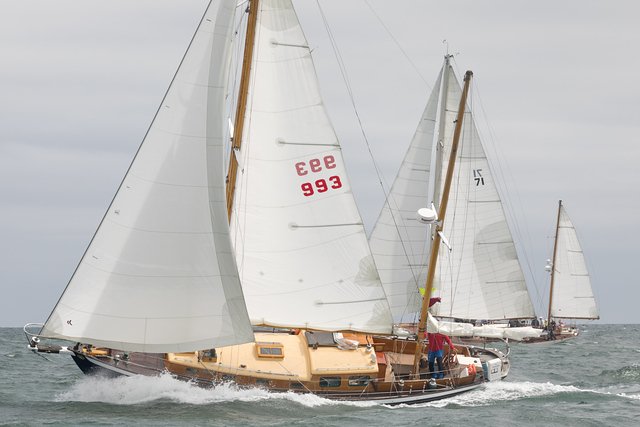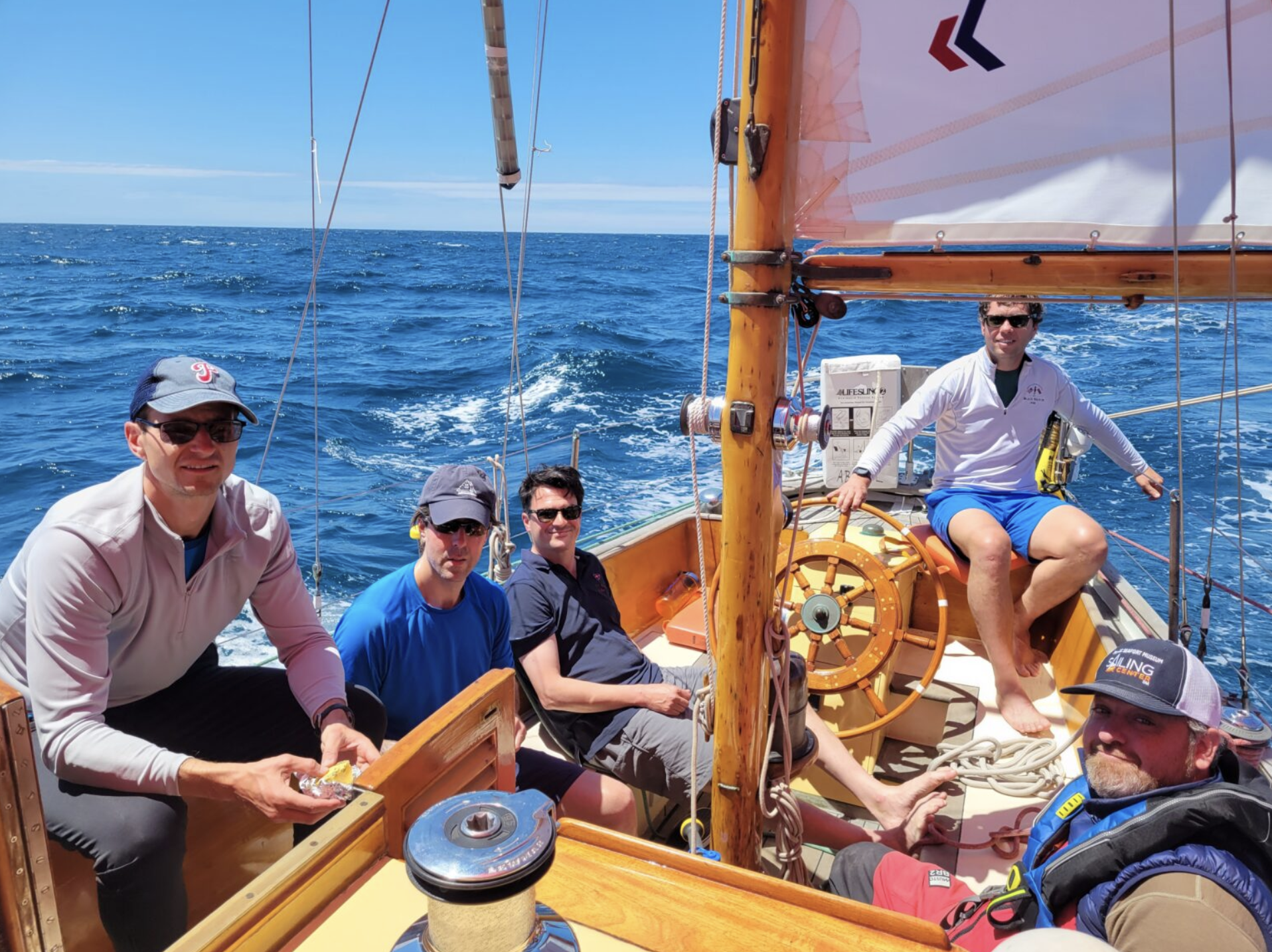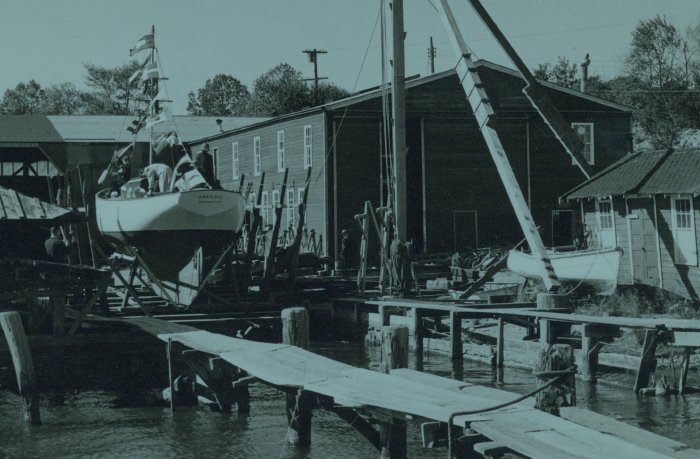Recapping a Classic Yacht’s Journey in the Bermuda Race
There are only two wooden boats so far, out of the 75 entries in the 2022 Sydney Hobart Race. At this stage there are 54 entries in the 50th Melbourne to Hobart Race and none of them are genuinely timber.
Earlier this year, the American equivalent of the S2H took place , the 635nm Newport to Bermuda race. No less than eleven of the entrants were genuine Classic Yachts. The article below tells how it went for one of them. With overtones of adventure and camaraderie, it’s the sort of story that might encourage participation in the opposite hemisphere.
By Jesse Terry, owner of ABIGAIL, 1956 auxiliary ketch
A SSW breeze was expected to build to 20 knots by the afternoon of the Newport to Bermuda Race start, and gentlemen, nor my 1956 Alden, plank-on-frame, 39’ wood ketch, sail to weather. I was not looking forward to tacking ABIGAIL past Brenton Reef fighting the chop only to face scattered squalls with winds above 30knts that evening.
That was just the immediate forecast. What I had to worry about was where to enter a flattening Gulf Stream, the right number of blocks of ice for five days, getting the six-person crew through a 2 hour customs wait, and starting line tactics with ~190 boats of different speeds and maneuverability.
The adventure was beginning and it was nothing like what I anticipated. Years, months, and days of prep work were forgotten. We just wanted to make it through the evening of squalls and then the Gulf Stream safely/conservatively reminding ourselves that this trip was our vacation time. The first night of serious wind never came. We were able to race through to the Stream with a couple of starts and stops as the low-pressure system broke up. The Gulf Stream did have big wind and waves, but it was going our way. A 25+ knot breeze pushing us wing and wing combined with surfing down 10-15’ waves produced 10 to 14 knot boat speeds on a 24,000lb full keel boat that usually sees 7 knots. A strategy of getting through it quickly changed to stay in the stream as long as possible. Anxiety had turned to excitement and after 10 hours, we shifted our attention to the “Happy Valley.”
Unfortunately, we gave the “Happy” part a little too much credit. 100nm south of the Gulf Stream, we were sailing in the middle of the night with a symmetrical spinnaker, main, mizzen staysail, and mizzen in 11 knots of breeze. We did not see the cell come overhead, but 30 knots hit instantly and we broached. Tough to do on a heavy full keel and I had never even been close before. The storm lasted ten minutes, and it took us that time to get the spinnaker and staysail down. It took us thirty minutes or so regain to our courage and not until daybreak to see the extent of the damage (a large holiday appeared in the varnish on the boom where it had been on the lifelines in the water). The rest of the Happy Valley lived up to its reputation including the close-hauled approach to Bermuda and a 2 am finish added drama.
We were unbroken (boat and crew) and excited. As long as we could beat three cruise ships through the Narrows at 6 am, we would be able to celebrate our achievements. It was exhilarating, but after three Dark’N Stormies at 9am, all I could do was sleep. A lot.
We spent the next several days in the Bermuda sun happily reflecting on our achievements. The prep work had paid off under a fairly dramatic test. Our team was elated with the adventure of the journey and now the top of the mountain was the warm welcome of Bermuda.
We exceeded our expectations with a fourth-place finish in our twelve-boat class (that included Stan and Sally Honey’s ILLUSION who won the whole race and two other Classic Yachts). I was overwhelmed with a sense of appreciation – appreciation for the experience, the support of my family and crew, the Bermuda Race Organizing Committee, my boat yard (Noank Marine Services), and my father for getting me to the finish line. I had done the race four times prior on another boat, but nothing compares to the pride and satisfaction as Captain/owner, particularly after the work involved to get to the starting line.
Six of us came down and six of us went back. Our nine-person overlap on island time was fun. College and high school friends swapped out with college and high school friends. The return trip included less wind and more indulgences like fishing and cooking substantial meals (not the least of which were fresh Mahi Mahi tacos).
Almost a month later writing this, the appreciation for the experience still brings a smile to my face.
I am thankful.
This story was first Published in the website of Classic Yacht Owners Association (USA)
ABIGALE, a 1956 auxiliary ketch, was design number 907 of John Alden, and designed as an improved version of the celebrated ketch Staghound, winner of two consecutive Trans-Pacific races. She exemplifies Uffa Fox’s axiom: “the best ocean cruiser is the best ocean race.” She is a heavy displacement boat with well-balanced ends and the ability to carry plenty of sail. ABIGALE was built by Seth Persson in Old Saybrook CT right after he built Finisterre, a 3x Bermuda Race winner. His attention to detail is evidenced in his hallmark cast bronze floors, and knees, double planked hull, and choice materials used in her backbone, spars, fasteners, and hardware.





